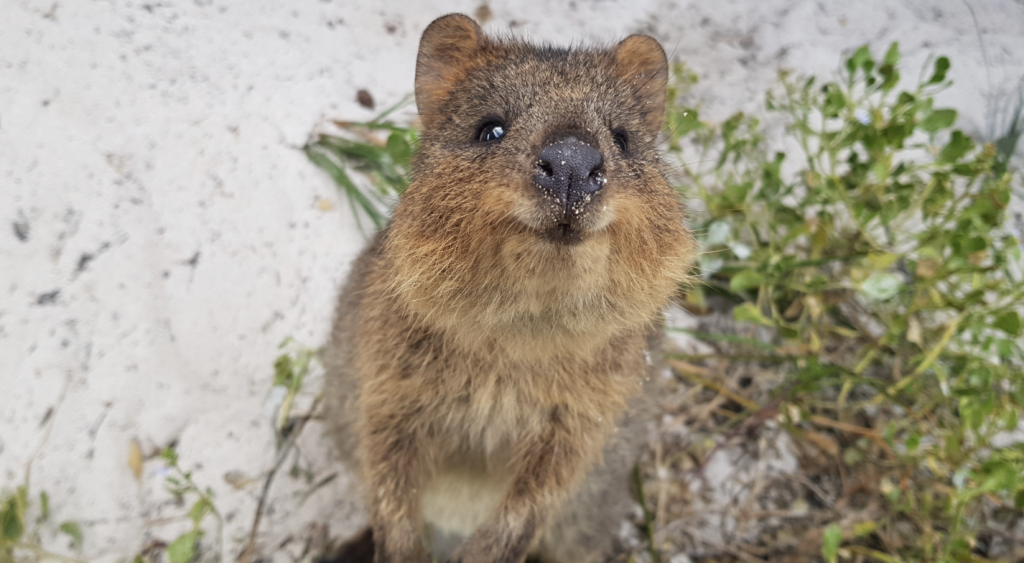
In the heart of the wild lands of the Australian continent, animals never cease to fascinate and fuel the imagination of future travelers. Because here, in this country with a thousand faces, reality often surpasses fiction. You can catch sight of koalas peacefully perched in the neighboring trees and kangaroos bounding in front of you without warning… Australia’s animals offer surprises, wonder, and sometimes, let’s be honest, a shiver or two!
Discover an overview of 10 animals of Australia that you can easily observe during your Working Holiday Visa.
The koala is undoubtedly one of Australia’s most iconic animals. This adorable marsupial spends most of its time in eucalyptus trees, feeding on their leaves.
Did you know? The koala has a fingerprint almost identical to that of humans! These similarities are so striking that even a thorough analysis under a microscope often cannot distinguish between them.
Some places to find them:
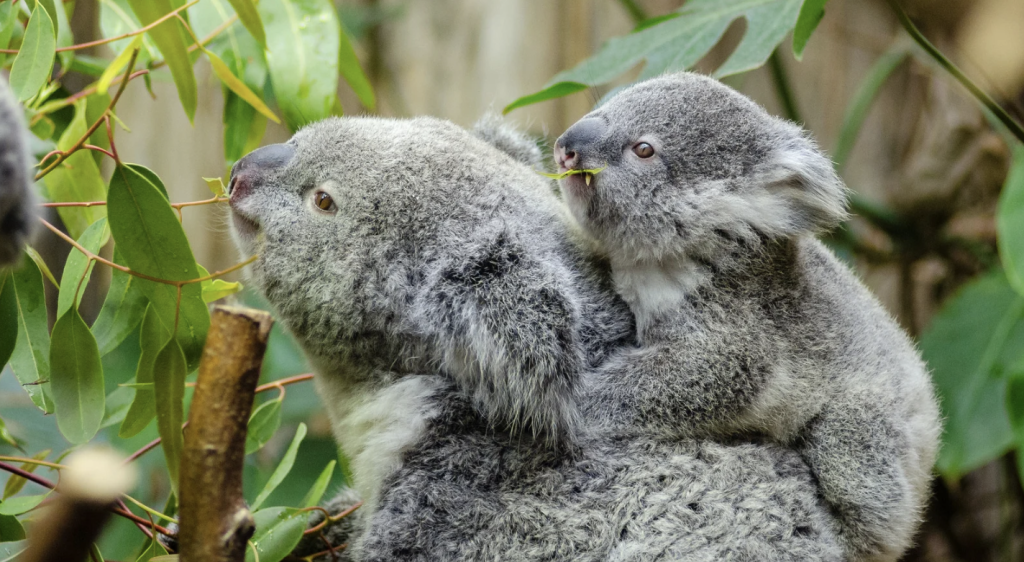
The wombat is a stout-bodied terrestrial marsupial. This nocturnal herbivore mainly feeds on grasses, roots, and bark. It possesses impressive strength and digs very complex burrows. It is also famous for its muscular posterior, which serves as protection when attacked by predators.
Some places to find them:
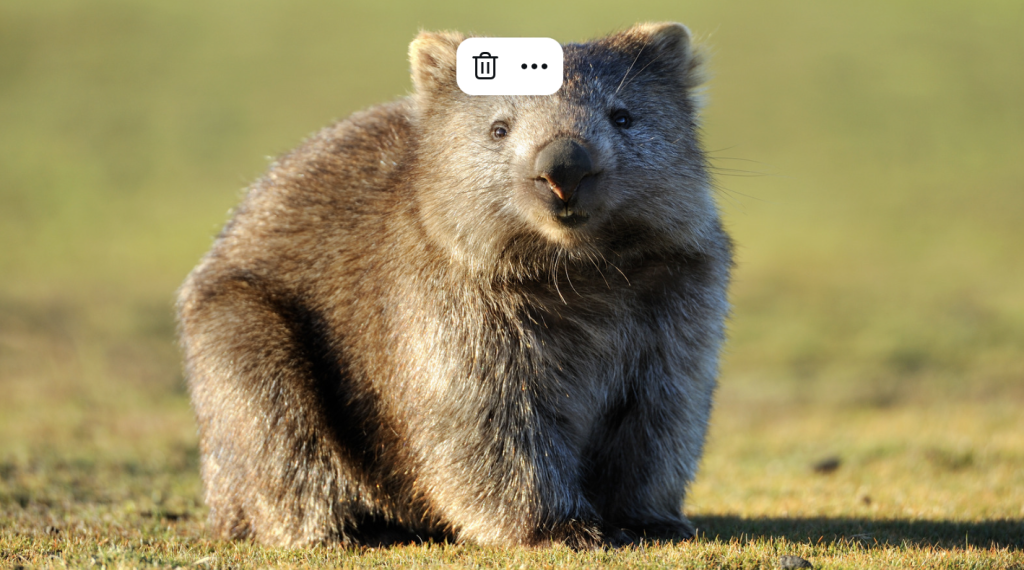
The Tasmanian devil is a carnivorous marsupial symbolic of Tasmania. Recognizable by its black fur and distinctive white markings on the face, it is known for its piercing cry and aggressive temperament when threatened.
Unfortunately, this animal faces a contagious disease: Tasmanian devil facial tumor disease. It has decimated many individuals of this species. Faced with this health crisis, strenuous conservation efforts are being made. These initiatives include researching treatments, monitoring populations, and raising public awareness of the importance of preserving this marsupial.
Some places to find them:
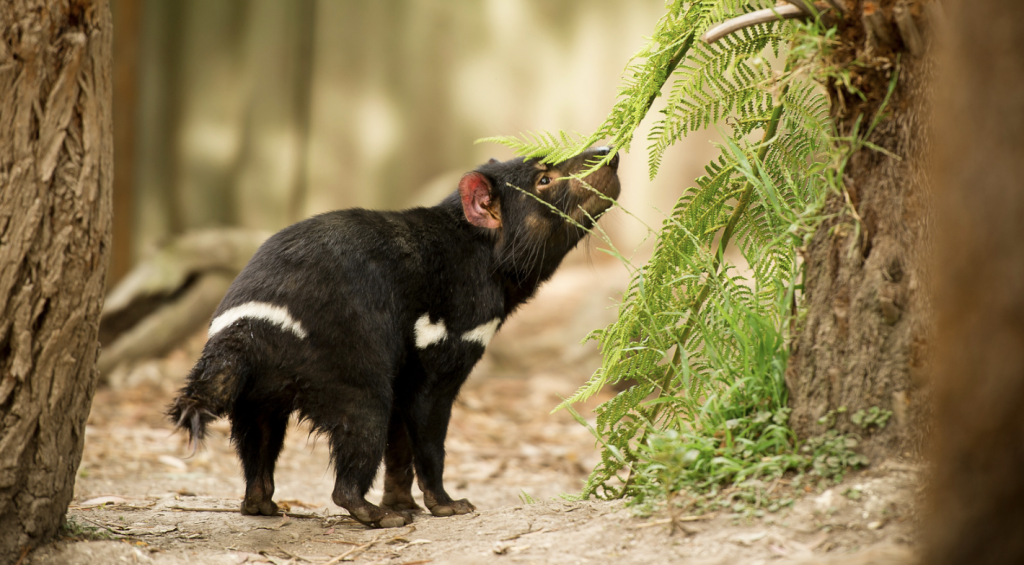
Quick scientific note: Macropods form a family of marsupials. This term refers to their distinctive anatomical feature, namely their long and powerful legs, adapted for jumping.
The kangaroo is another emblem of Australia. This marsupial is endowed with powerful limbs and a muscular tail that allows it to move with agility across the vast arid expanses. Its thick fur and gray-brown color provide effective camouflage in the varied landscapes of the Australian Outback.
In Australia, the most common species are the gray kangaroo and the red kangaroo. You can find them as soon as you leave the cities!

The wallaby is a smaller cousin of the kangaroo. Its fur varies in color among species, ranging from brown to gray. It often has a distinct band on its back. The wallaby is distinguished by its herbivorous diet, mainly feeding on leaves, grasses, and fruits.
In Australia, the most common wallaby species are the Bennett’s wallaby (or red-necked wallaby), the rock wallaby, the agile wallaby, and the brush-tailed wallaby. You can even spot white wallabies (albinos) on Bruny Island in Tasmania!
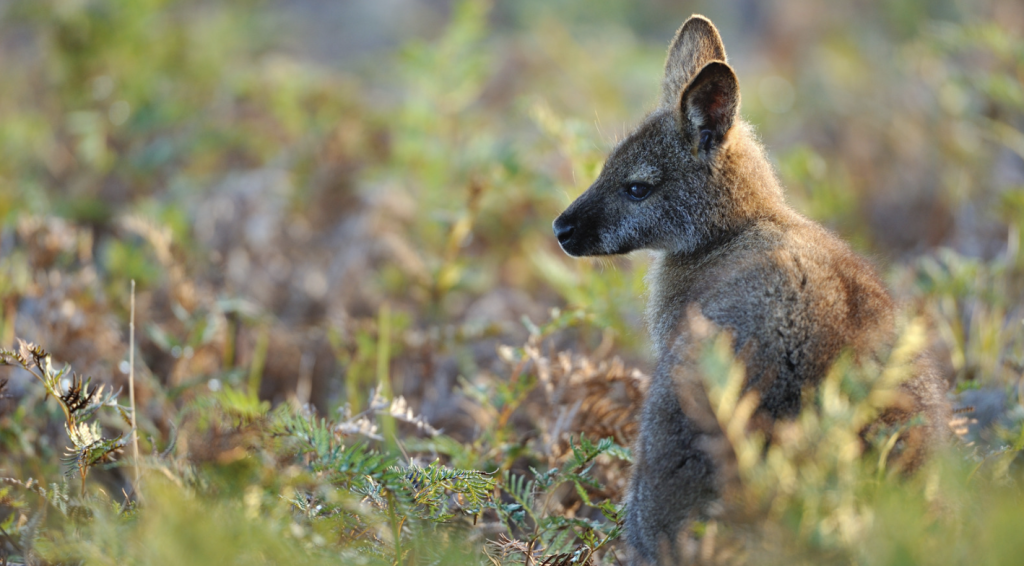
The pademelon is also a small marsupial of the kangaroo family. Recognizable by its small size and reddish-brown fur, it moves agilely through the undergrowth in search of leaves, fruits, and plants. Unlike its larger cousins, the pademelon is often shy and prefers to avoid interactions with humans.
It inhabits tropical forests and wooded areas in the east and southeast of Australia. You can also spot it in Tasmania, hidden in the bushes or near the rivers of the rainforests.
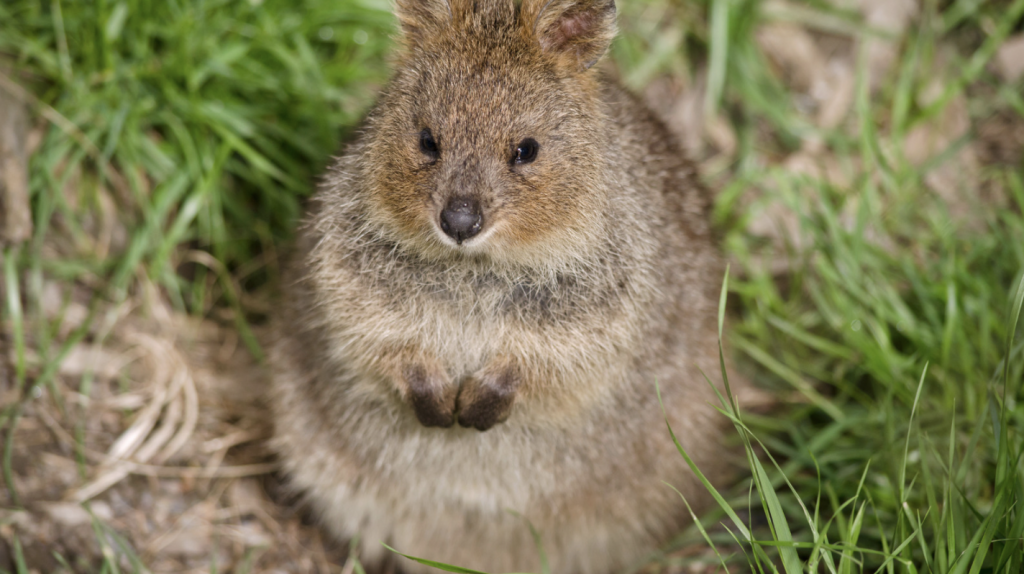
The quokka is a small marsupial, often described as “one of the happiest animals in the world”. Indeed, it is recognizable by its perpetually joyful expression and sparkling eyes. Even though it’s its physiology that is like this, the quokka has become a true darling of social media! It regularly appears in selfies of visitors enchanted by its irresistible charm.
Some places to find them:
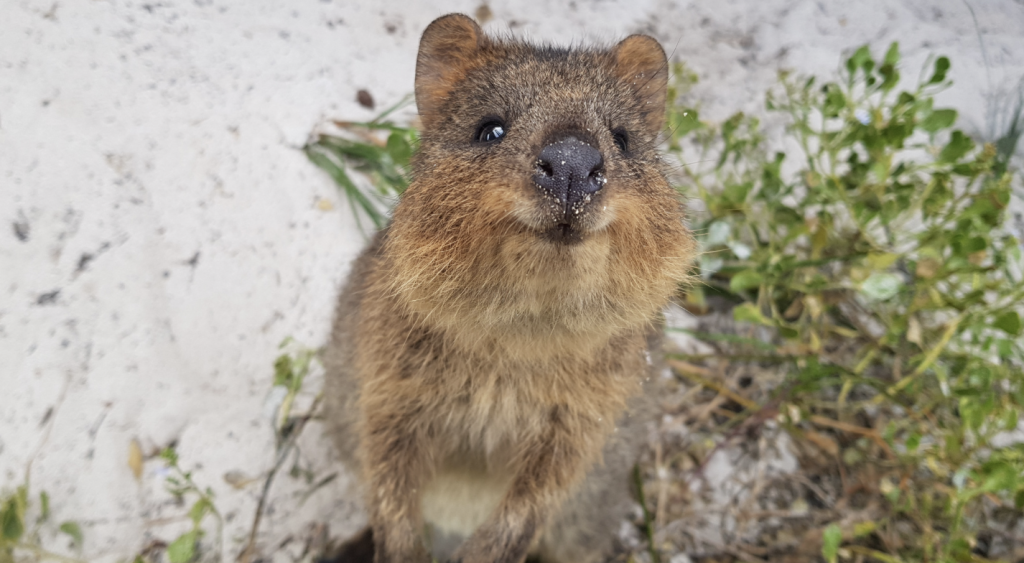
Quick scientific note: Monotremes are mammals that lay eggs but nurse their young!
The platypus is one of the rare representatives of monotremes in the world. This semi-aquatic mammal has a duck-like bill, a beaver-like tail, and webbed feet.
An astonishing fact about the platypus is the presence of venom in its spurs. Males have venomous spines on their hind legs, used in territorial fights and to defend against predators. This venom can kill a dog but is not lethal to humans—although the pain is excruciating.
Some places to find them:
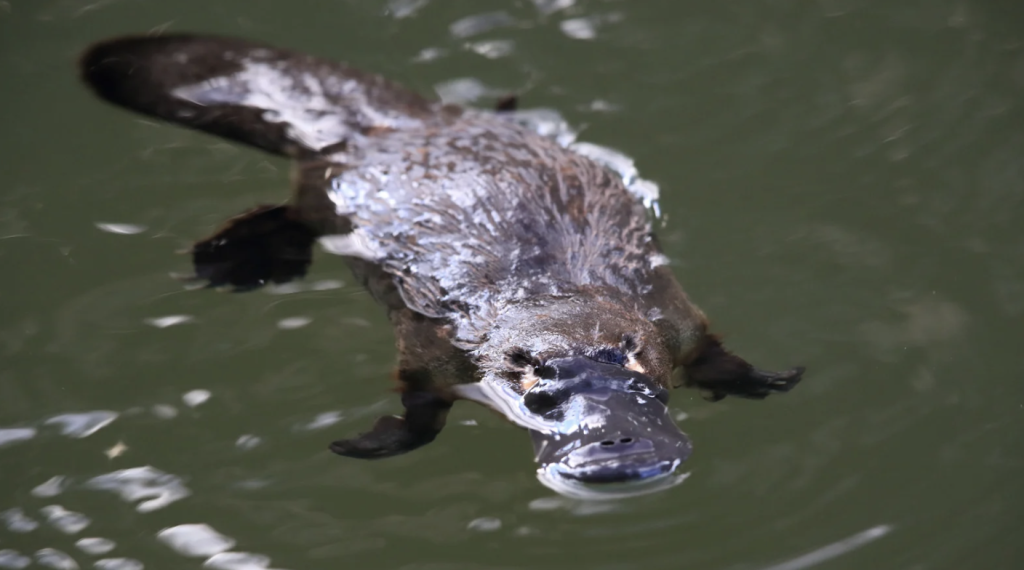
The echidna, or spiny anteater, is another hyper-cute monotreme. This small mammal covered in spines resembles a hedgehog but has a long, pointed snout that allows it to dig into the ground in search of its favorite food: ants and termites.
Some places to find them:
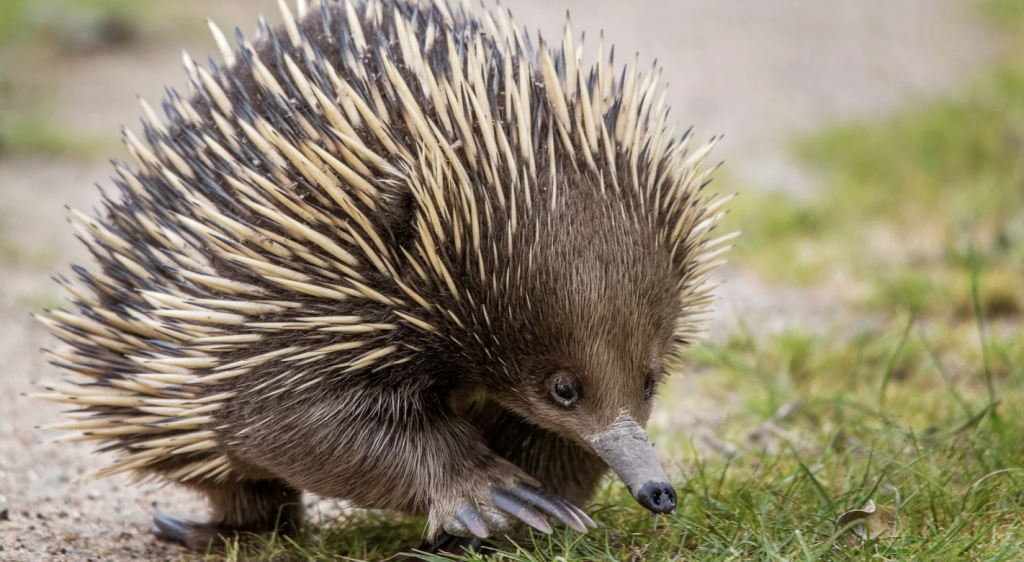
The emu is the largest bird in Australia and the second largest in the world after the ostrich. With its imposing stature and long legs, it can cover long distances at surprising speeds.
Did you know? Emus have remarkable intelligence and can memorize the locations of water points over vast territories.
Some places to find them:
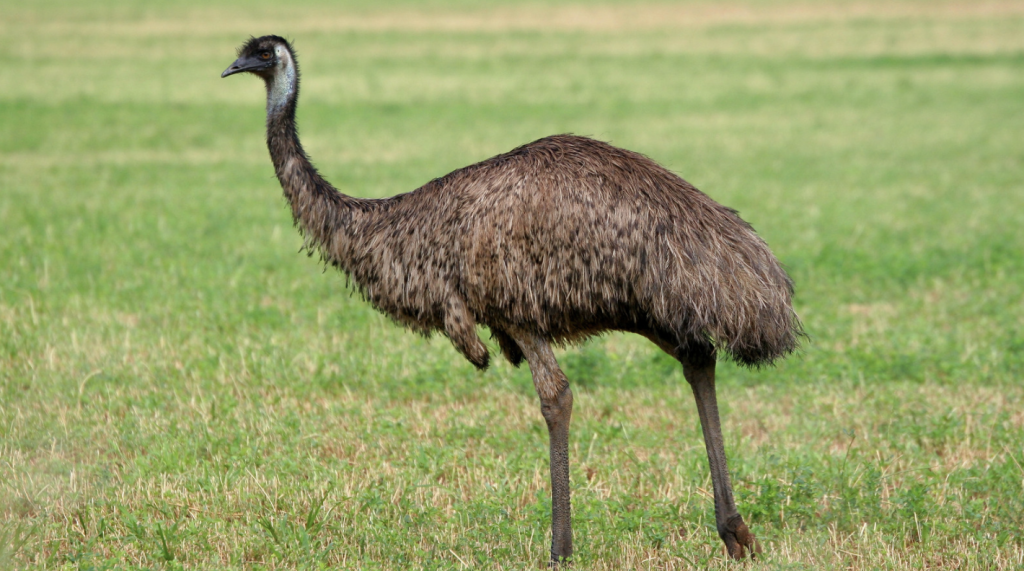
In addition to kangaroos and koalas, iconic symbols of Australian animals, Australian wildlife also holds surprises in the city!
Article written by Manon from Goldenturtles.fr
Ne manquez plus les meilleures opportunités de road trip avec Vanz Travel ! Abonnez-vous pour recevoir bons plans et conseils pratiques pour vos aventures en van.

Looking for the perfect van for your next adventure? Look no further than Vanz Travel! We offer an extensive range of campervan rentals in Australia and New Zealand, ensuring that you’ll find the ideal vehicle to suit your needs and budget.
Copyright Vanz Travel Pty Ltd, all rights reserved.